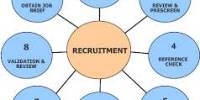Job evaluation is the systematic process for assessing the relative worth of jobs within an organization. It is the technique of analysis and assessment of jobs to determine their relative value within the firm so that a fair wage and salary structure can be established for various jobs. The main objective of job-evaluation is to have external and internal consistency in wages structure.
The defining feature of non-analytical evaluation schemes is that whole jobs are compared with each other without any attempt to break down and analyze jobs under their various demands or components.
Non-analytical Job Evaluation Methods
Ranking Method: This is the simplest and an inexpensive job evaluation method, wherein the jobs are ranked from the highest to the lowest on the basis of their importance in the organization. In this method, the overall job is compared with the other set of jobs and then is given a rank on the basis of its content and complexity in performing it. Job ranking is a simple process which reflects what people tend to do when comparing jobs, but:
- there are no defined standards for judging relative worth and there is, therefore, no rationale to defend the rank order – it is simply a matter of opinion
- ranking is not acceptable as a method of determining comparable worth in equal value cases
- it may be hard to justify slotting new jobs into the structure or to decide whether or not there is a case for moving a job up the rank order, i.e. re-grading
Here the job is not broken into the factors, an overall analysis of the job is done. The main advantage of the ranking method is, it is very easy to understand and is least expensive. But however it is not free from the limitations, it is subjective in nature due to which employees may feel offended, and also, it may not be fruitful in the case of big organizations.
Job Grading Method: Also known as Job-Classification Method. Under this method, the job grades or classes are predetermined and then each job is assigned to these and is evaluated accordingly.
For Example Class, I, comprised of the managerial level people under which sub-classification is done on the basis of the job roles such as office manager, department managers, departmental supervisor, etc.
The advantage of this method is that it is less subjective as compared to the raking method and is acceptable to the employees. And also, the entire job is compared to the other jobs and is not broken into factors. The major limitation of this method is that the jobs may differ with respect to their content and the complexity and by placing all under one category the results may be overestimated or underestimated.
















